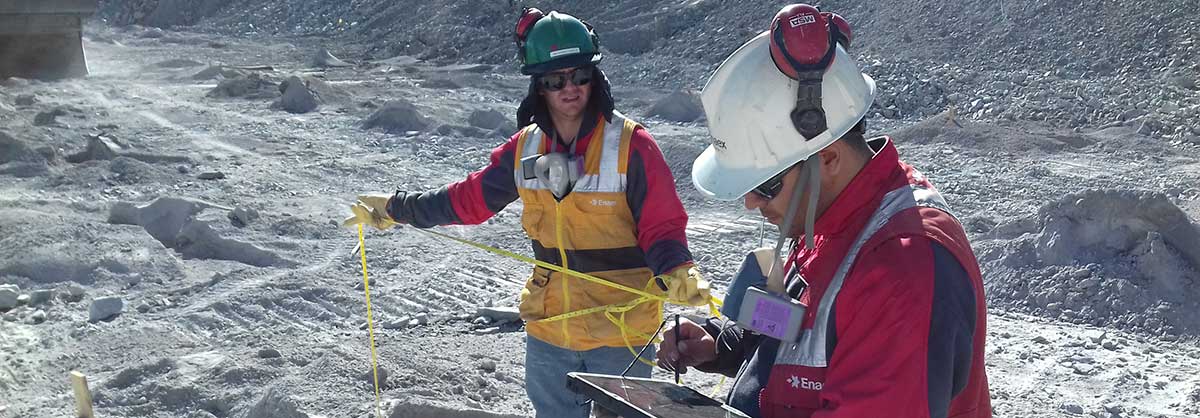March 2019 Issue Index
Benchmarking drill and blast
Maptek BlastLogic enables improved design compliance monitoring and downstream productivity optimisation across Anglo American’s open pit operations.
Anglo American’s Technical team launched an improvement project in 2017 to provide a foundation for developing sound drill and blast designs which could be effectively executed and easily reconciled.
Maptek BlastLogic was selected to enable the quantification of compliance to design metrics and provide confidence in sustainably achieving desired blast outputs.
Six operations were scheduled for initial implementation, with mines in Chile, Brazil and South Africa, across a range of products including copper, diamonds, iron ore and platinum group metals.
Technical solution
The technical system included:
- Advanced drilling design
- Blast design and reconciliation
- Benchmark reporting capability
Roll-out of the technical solution has enabled efficiency gains through standardisation and alignment of various processes.
For example, one operation required normalising to a common scale of four different coordinate systems used by three different drill navigation systems and general mine planning software. Although systems had previously been in place to manage the disparate data, the alignment process gave engineers additional time for other tasks and reduced errors associated with data management.
Integration with existing applications such as electronic initiation systems has reduced the need for information to pass through different systems and further decreased transformation or re-formatting requirements.
Due to the wide geographical distribution of operations, the technical system is hosted in centralised data centres on each continent and the validated data is consolidated through a global reporting platform.
This has led to improved integration between different business unit technical teams, facilitating the benchmarking of data and aligning operations on key compliance to design metrics.
Importantly, it has resulted in a reduction of inconsistencies and discrepancies in metrics reported between operations, as the calculations and data are derived from a single standardised source of truth.
Common access to centrally stored and managed data allowed different functional teams to meaningfully collaborate, start delivering sustainable operational value and identify additional improvement opportunities.
In particular, the coordination shone a light on the importance of tracking and analysis of drill and blast metrics in a consistent manner across the global business. Inefficiencies are now clearly identified at critical stages of the process, and site personnel are empowered and enabled by management to devise strategies for improvement.
Study results
Results from five performance metrics were tracked over a six-month study period from February to August 2018, incorporating 142,000 hole records.
Positive trends in performance metrics were observed over the period after implementation in the first six mines. Although no baseline analysis from before implementation was readily available, the results show collective improvement.
The BlastLogic solution has enabled improvement in supervision of planning and operational processes. Average overall system usage increased by 54% as personnel focused on role specific value-adding tasks interlinked within the drill and blast process and critical to desired outcomes. This enabled the start of more integrated work practices and a breakdown in functional siloed behaviour.
Specifically, the data validation process overseen by the engineers provided the necessary quality assurance to support downstream operational routines.
Performance metrics
Hole collar compliance
Hole collar compliance improved by 8%, with all six operations reducing variability and converging to the highest collective values. One factor was the alignment of data from disparate drill navigation systems.
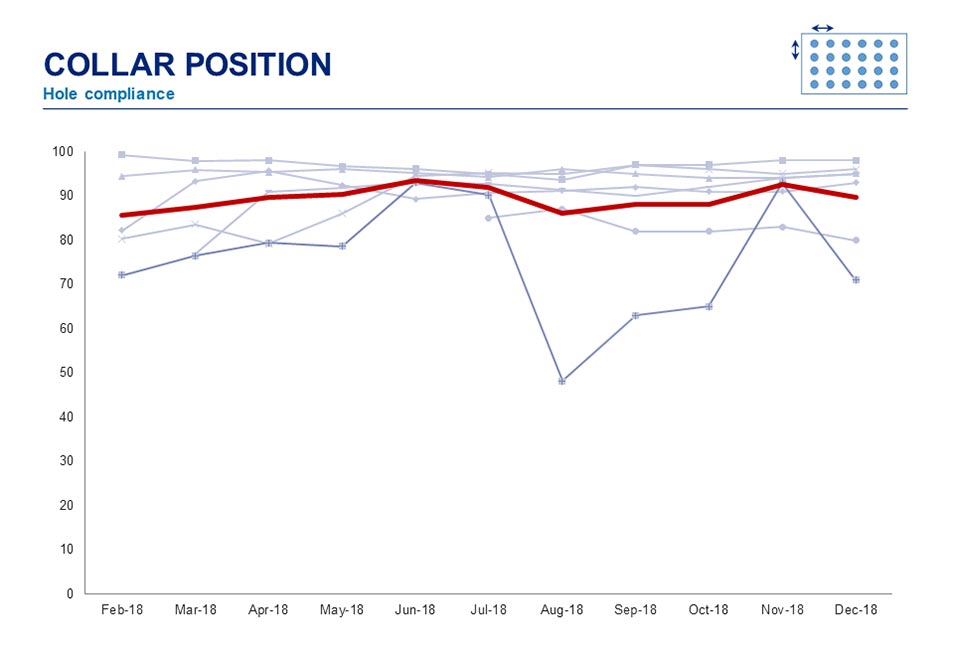
Hole depth compliance
Despite significant variance between operations, a 20% increase in compliance to hole depth was realised. Systemic sources contributing to deviations in targeted hole depths were recognised and addressed.
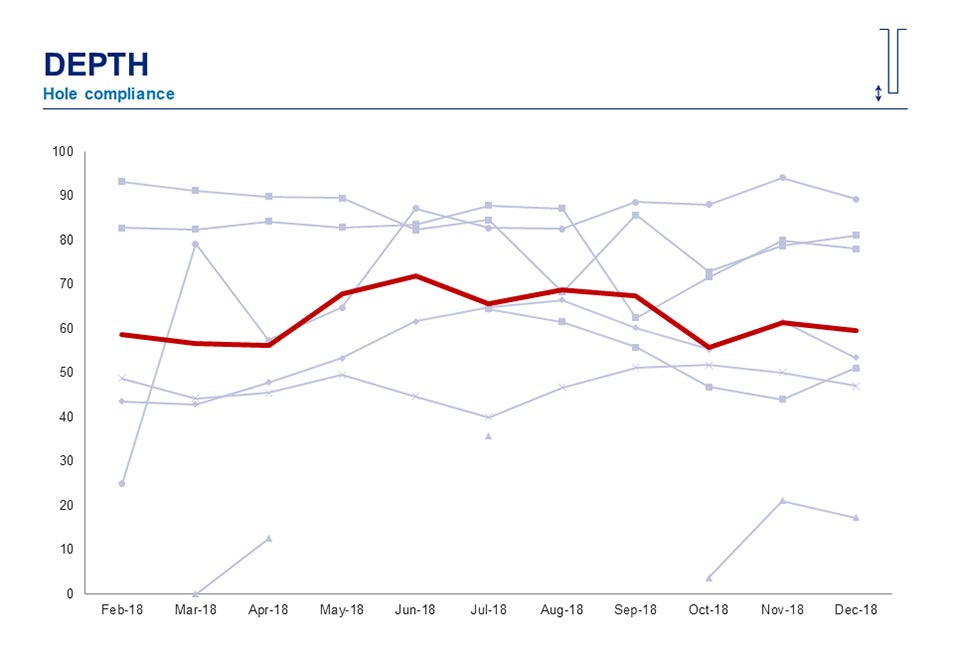
Hole charge
Charge compliance varied significantly across operations, and generating a sustainable uptrend remained a challenge over the period. Several behavioural and operational factors are understood to impede the desired improvements.
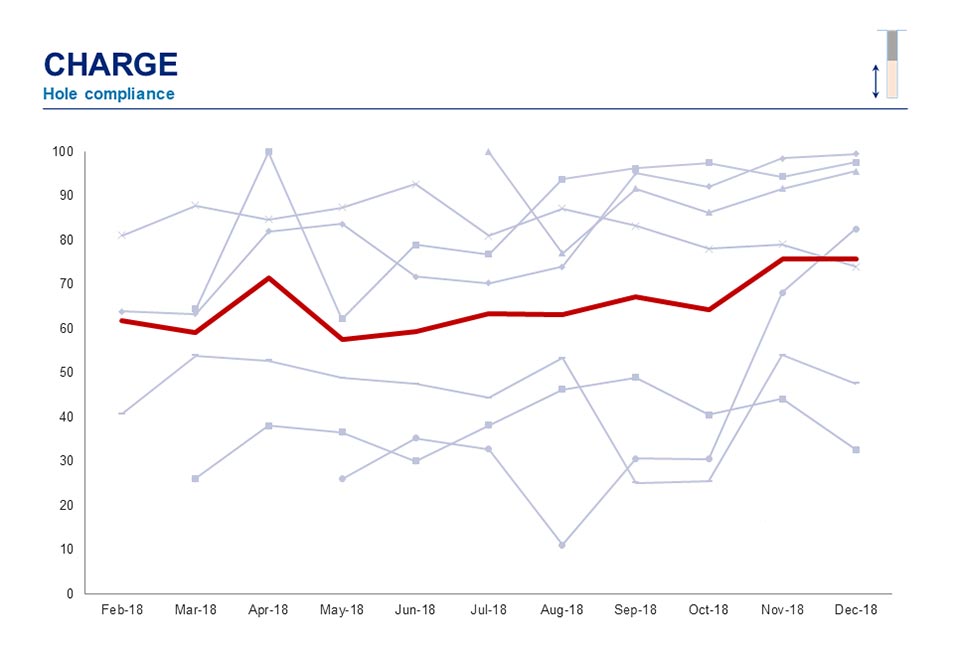
Hole stemming compliance
Stemming compliance realised a 125% improvement following a renewed focus on the metric in May 2018. Unfavourable work practices and lack of consistent setting and measurement of design tolerances were identified as issues.
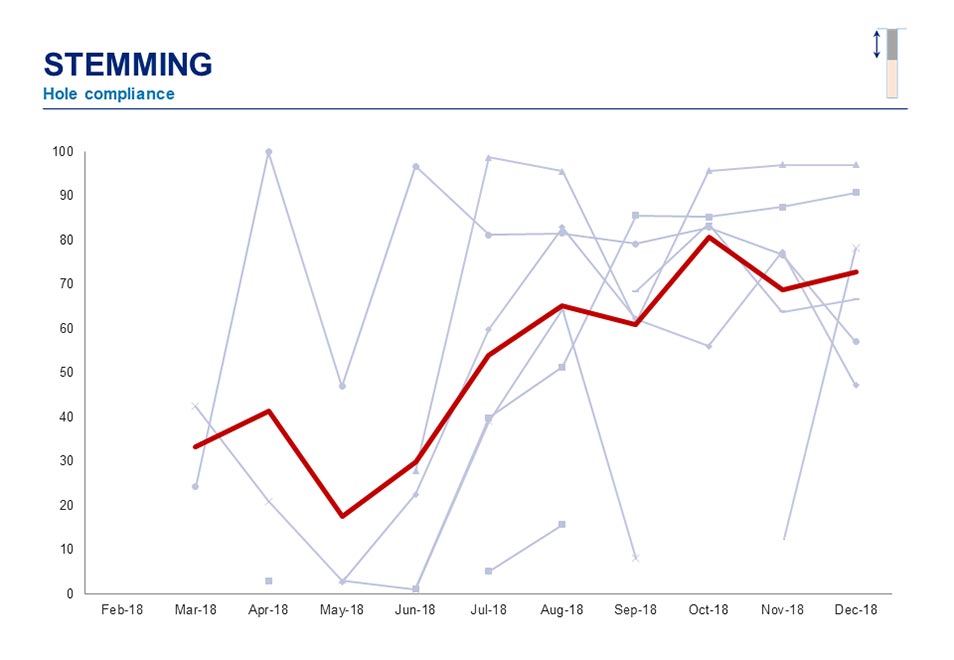
Hole exceptions
The hole exception metric saw a 21% decrease until June 2018, before the trend started to reverse. Hole exceptions are defined as holes which fall within one of the following categories:
- Holes drilled but not designed
- Abandoned holes
- Holes designed but not drilled
- Holes charged but not drilled
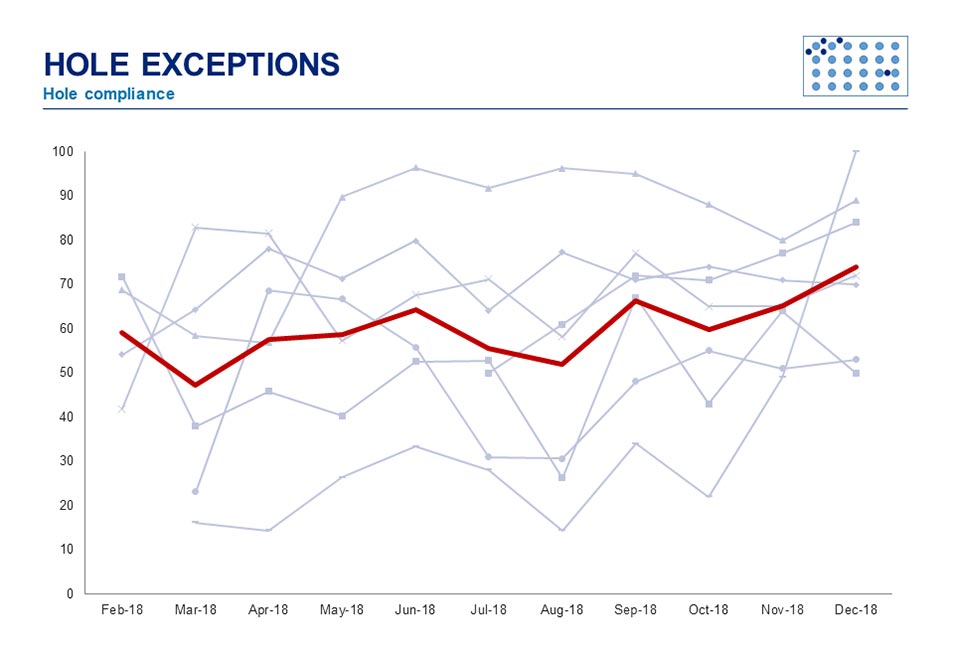
The aim is to minimise or eliminate exceptions through improved design, information management and work practices. Analysis of the data revealed that the high values were mainly attributed to ‘designed-not-drilled’ and ‘charged-not-drilled’ conditions. This is representative of many contractor rigs lacking drill navigation systems and survey not measuring the collar locations. The reporting highlighted a gap in quality control and has resulted in better integration of inter-functional processes.
Conclusion
BlastLogic is now relied on as an operational mining tool to track, quickly understand and act upon all factors impacting critical stages of the drill and blast process.
Evidence-based information was central to achieving successful implementation, with the immediate feedback loops delivering improved awareness of the key performance indicators. Personnel have thrived in working with state-of-the-art technology and participating in the drive for group wide improvement.
A 23% improvement across 142,000 hole records was realised in relation to overall compliance to designs over the six-month period.
Quantification of five fundamental design parameters highlighted significant variability in relation to executing designs effectively. Further focus on these metrics will allow for improved accounting of blast performance, and better definition of practical tolerances to which they should be executed.
Stabilisation of variability within the measured data will allow operations to safely capture additional value through their blasting practices, enabling opportunities such as pattern expansion, steeper pit slopes, grade engineering and improved mine to mill practices.
Successful roll-out at the six original sites has supported extension of the BlastLogic technical solution to other Anglo American operations, and strengthened the prospect of sustainably achieving desired outcomes through improved compliance to design.
Alan Tordoir, Lead Drill & Blast
Anglo American

